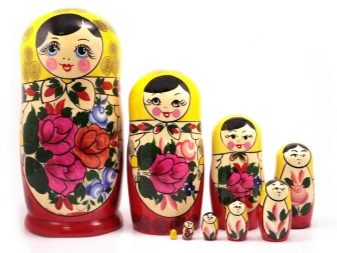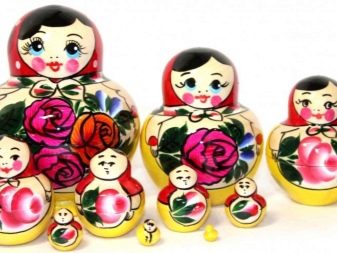All about Semyonovsky nesting dolls
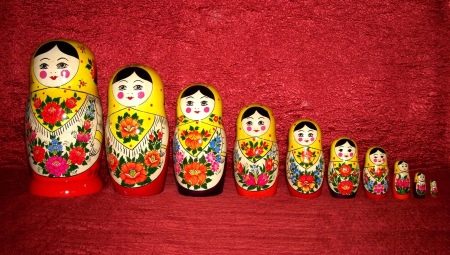
At the factory in the city of Semenov, located 70 kilometers from Nizhny Novgorod, the world famous nesting dolls are made. Through the popular Russian souvenir, the Semyonov painting became a national cultural heritage. And her place of birth was the village of Merinovo, not far from Semenov. About how the Semyonovskaya nesting doll and painting arose, about the current state of the craft, and in addition, about the specificity of the painting technique - we talk in our article.
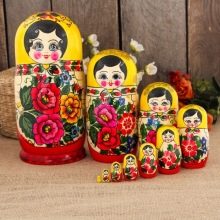

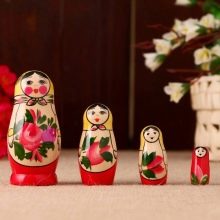
Features of painting
The Semyonovskaya nesting doll stands out from the rest in that it is multi-seat and includes 15-18 figures differing in color. This matryoshka doll features a floral dress and a painted scarf. They paint a Semyonov nesting doll without following certain rules.
The basis of Semyonov painting is colorful, expressive, large flowers crowned with rowan berries, bows, dots and a small flower. Often matryoshka from Semyonov is compared with Sergiev's one: they are similar, but decorated items from Semyonov are more ornamented.
The craftsmen of Nizhny Novgorod were guided by the so-called herbal ancient Russian ornaments.
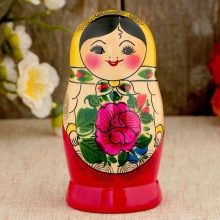

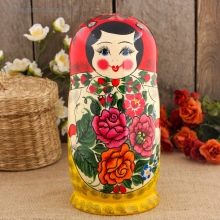
For matryoshka Semenov painting are typical:
- a significant amount of unpainted wood;
- a doll's apron with large flowers painted on it;
- blue, yellow and red - the color dominance of which should harmoniously fit into the design of the scarf, matryoshka apron, sundress;
- asymmetry of the location of the bouquet on the apron with a slight shift to the right side;
- turning, in which the matryoshka is more stately (in comparison with the Sergius one), with a relatively thin top.
Until 1953, the Semyonov nesting dolls were in the shadow of the Zagorsk and Sergiev ones, but when they first got abroad, they began to compete with the more famous models. And the rivalry was profitable - the colorful, vivid performance of Semenov's painting helped the matryoshka dolls increase consumer demand.
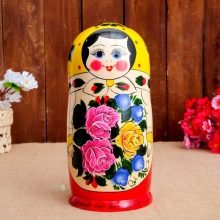
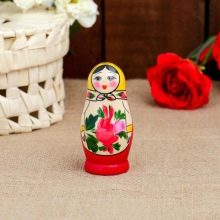
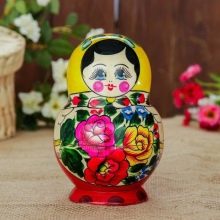
History of origin
Is the Semyonovskaya matryoshka and the Merinovskaya the same thing? Art history scholars are still arguing and have not come to a common solution. But there is no doubt that these are similar trades.
At the end of the 19th century, the Russian itinerant artist S. E. Malyutin brought from the city of Honshu (Japan) to Russia a figurine of a friendly, bald old man, the sage Fukuruma. In Abramtsevo, S. E. Malyutin had an interesting plan. He remembered turning Easter eggs (the name for eggs carved from wood), which are inserted into one another. Malyutin invited the turner V. Zvezdochkin to work, and they jointly made a doll from wood, which is known in the world today as a matryoshka. It was made in the image of a mother, in whose cavity 7 daughters were hiding, and the last, the 8th, represented a swaddled baby.

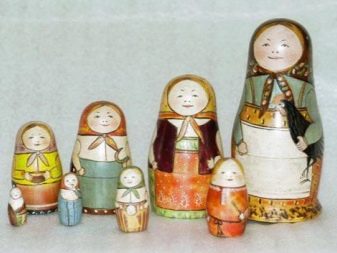
Matryona shocked everyone at the 1900 Paris World Exhibition. Craftsmen of folk arts and crafts became very interested in this toy. A number of centers for its production have been formed in Russia. One of them was the small town of Semenov, located 70 kilometers from N. Novgorod.
In the remote Nizhny Novgorod forest Trans-Volga region there was a settlement of Old Believers, which later became a city. It was famous for painting on wood, which is called "golden khokhloma".
Later, around 1924, in Semenov, they began to sharpen and paint a doll from wood, which began to be called the Semyonov matryoshka, since it differs from the Polkhov-Maidan and Zagorsk ones.

The village of Merinovo is located 8 kilometers from Semenov. The offspring of the turner A. Valgin brought from Sergiev Posad a wooden doll (a man with a mustache and a beard), painted light green. The master immediately decided to carve a doll, consisting of 2 elements, inserted, like Easter eggs, one into the other. This is how the birth of the Semyonovskaya nesting doll began. At first it was painted purple, then the turner made a bald, mustachioed and bearded peasant and a respectable man in a hat and coat.
However, the family of the master A. Mayorov really glorified the Semyonov matryoshka and defined its image. Her story is like this. The master, having visited Nizhniy Novgorod, brought from the fair an unpainted wooden blank doll. His daughter Lyuba, using a goose feather, applied all the contours to it, and then painted it with aniline dyes with a brush. On her head she drew a Russian kokoshnik, and in the middle she placed a bright scarlet flower, similar to a chamomile. In fact, Arseny's daughter turned an ordinary hollow doll from the fair into a great Russian symbol. It was in this manner that they began to paint the Semyonov matryoshka in the future.
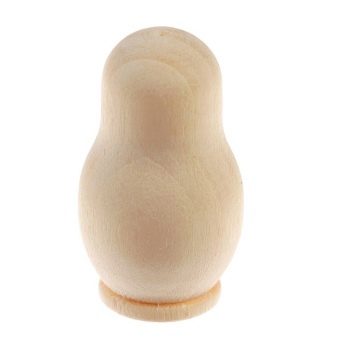

City matryoshka
From the village, the doll moves to the city of Semyonov. Shipowner and stockbroker D.V. Sirotkin founds a school of artistic woodworking (SHKHOD). It is headed by a professional artist, craftsman G.P. Matveev. In 1925, the matryoshka artel began to function, in which the graduates of SHKHOD work. At first, the artel consisted of no more than 20 people, mainly homeworkers. Then, on the basis of the artel, public workshops were formed. The production of nesting dolls is increasing. In 1929 the artel of toy makers became independent. In 1932 it became known as the Semyonovskaya Painting Art Factory.
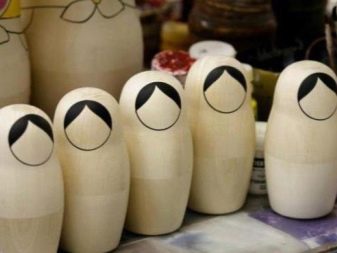
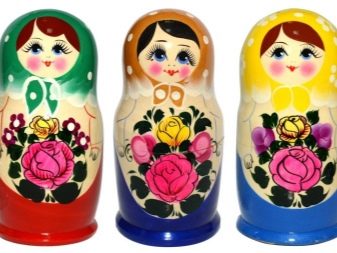
A lot of matrens have been made since that time, but there is one that no one has surpassed yet. In 1970 g.made the Trans-Volga beauty one meter high, with a diameter of 0.5 meters and a wall thickness of 0.5-0.6 millimeters, which includes 72 dolls. The weight of this nesting doll is approximately 30 kilograms. The painting artists had a very difficult time. She was entered in the Guinness Book of Records, and today she is in Germany. This is not the highest point for our masters. From the land of the rising sun came an application for the Trans-Volga beauty 180 centimeters high.
The Semyonov craftsmen will make it after they find a suitable, even tree.
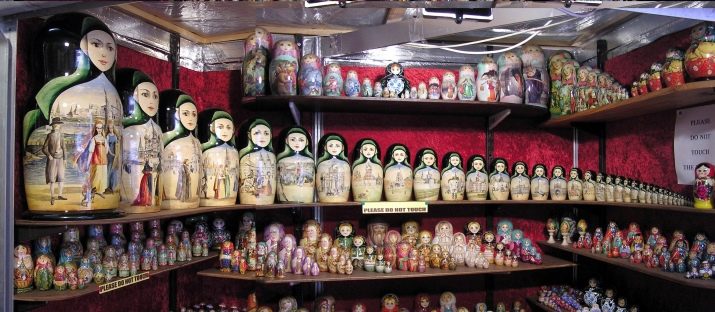
Matryoshka dolls in the modern world
At present, the Semenovskaya factory under the name Trade House Semyonovskaya Rispis LLC (its name has often changed due to frequent transformations) is successfully operating and produces, along with a variety of products, a large assortment of nesting dolls. The designers and artists of this factory have created quite a lot of extraordinary, often amusing nesting dolls.
In the image of a modern wooden toy, lovingly called a matryoshka, today the features of the Khokhloma, Merinovskaya and Fedoseevskaya folk paintings are captured. The nesting dolls made by Trade House Semyonovskaya Rispis LLC are sold to different parts of the world - to the United Arab Emirates, England, Germany, France, Canada and so on.
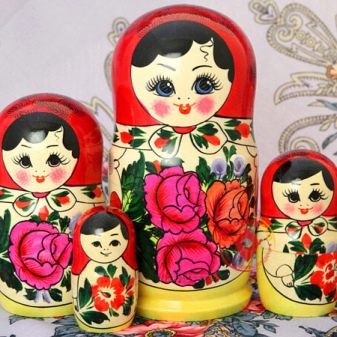
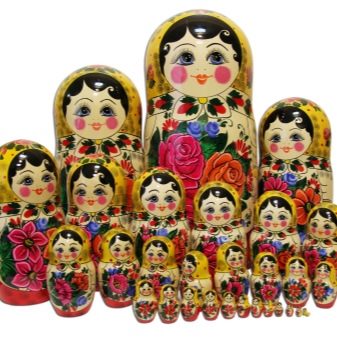
The masters of the renowned factory made an emphasis on environmentally friendly products as a great advantage: they use high-quality wood (birch and linden), aniline, gouache, harmless, certified varnish. It should be noted that varnish is the most important element of the matryoshka; for the Semyonov factory it is produced by special order. As a result, Semyonov nesting dolls acquire a special shine, rich and pleasant to the touch texture.
In 2017, a museum of matryoshka and traditional toys was opened here. The museum contains classic samples demonstrating how virtuoso Semyonov's painting is, as well as booklet matryoshka dolls and souvenirs, New Year's products. Here you can buy a pencil case, a fountain pen, a vanka, a souvenir composition "Teremok" and so on.

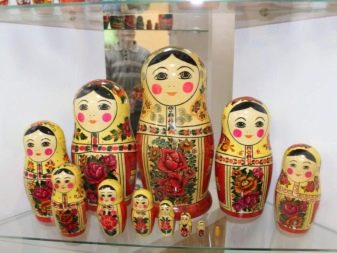
Russian nesting dolls are a real wonder of the world. Real - for the reason that it was, is and will remain the work of human hands. A miracle of the world - because in a miraculous way the toy symbol of our country travels all over the planet, and there are no borders for it.
Historically significant crafts, honed over the years, should be found not only in the archives and collections of museums. For this reason, more and more children's circles and studios are opening in our country aimed at teaching children traditional wood painting. And this is a significant contribution to the preservation and dissemination of folk art traditions.
